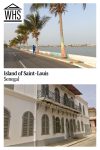Island of Saint-Louis
By Abigail Dalton
What is the Island of Saint-Louis?
The Island of Saint Louis sits in the heart of the city of Saint Louis, Senegal. The city itself is split into three parts: N’Dar, Guet N’Dar and Sor.
N’Dar is the main island and the star of the show. It’s a UNESCO World Heritage Site thanks to its fascinating history and striking colonial architecture. The island is small and narrow – about 2.5 km (1.5 miles) long and only 350 metres (1,148 feet) wide – but it’s packed with stories.
Saint Louis was first developed by the French in the 17th century and later became the capital of French West Africa. During its peak, the city thrived on trade. Slaves, gold, hides and beeswax all passed through here. Gum arabic, which was hugely important for industry, was also a key export. This boom shaped the layout of the city and left behind the elegant buildings you still see today.
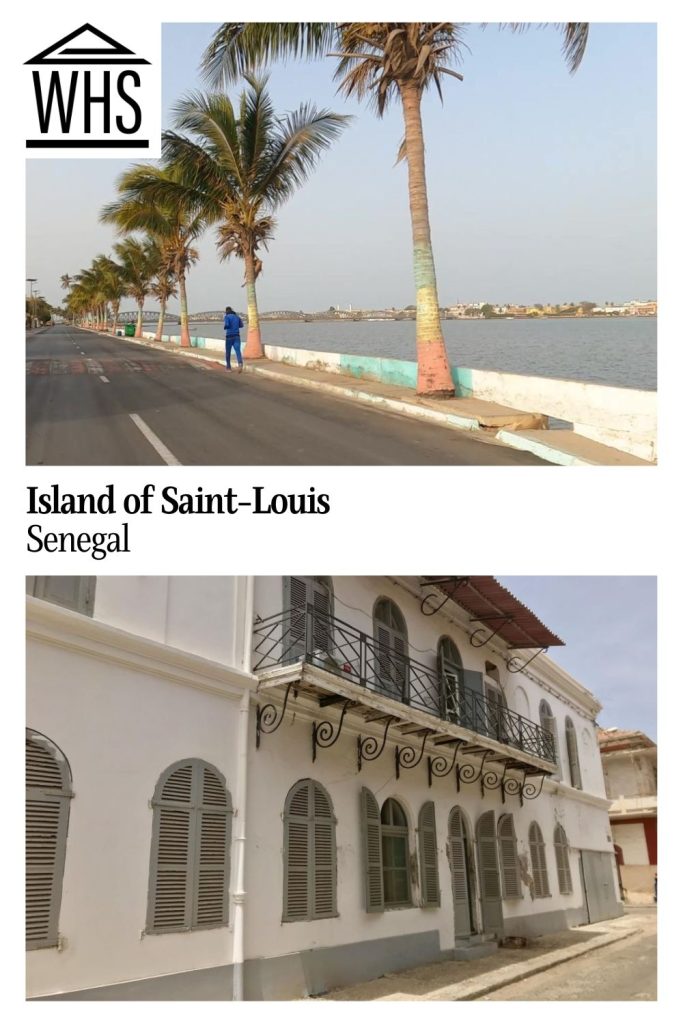
Disclosure: This article contains affiliate links. Making a purchase through an affiliate link will mean a small commission for this website. This will not affect your price. Privacy policy.
When the capital moved to Dakar and Senegal gained independence in 1960, Saint Louis began losing its political and economic importance. Over time, the city slipped into decline.
Today, the pastel-coloured buildings are crumbling and weathered, but that faded grandeur is exactly what makes the island so fascinating to wander.
Why is the Island of Saint Louis a UNESCO World Heritage Site?
The prosperous trade of Saint Louis attracted some of the most influential businessmen during the colonial era. They used it as a jumping-off point for travel up the river in search of slaves and items for export. The unique architecture and culture reflect this history and are exactly why UNESCO recognises it as a place worth protecting.
According to UNESCO, “The location of the town on an island at the mouth of the Senegal River, its regular town plan, the system of quays, and the characteristic colonial architecture give Saint-Louis its distinctive appearance and identity. […] The Island of Saint-Louis comprises a remarkable example of a colonial city with stylistic unity and urban homogeneity based on typologies and town planning principles inherited from the colonial administration.”
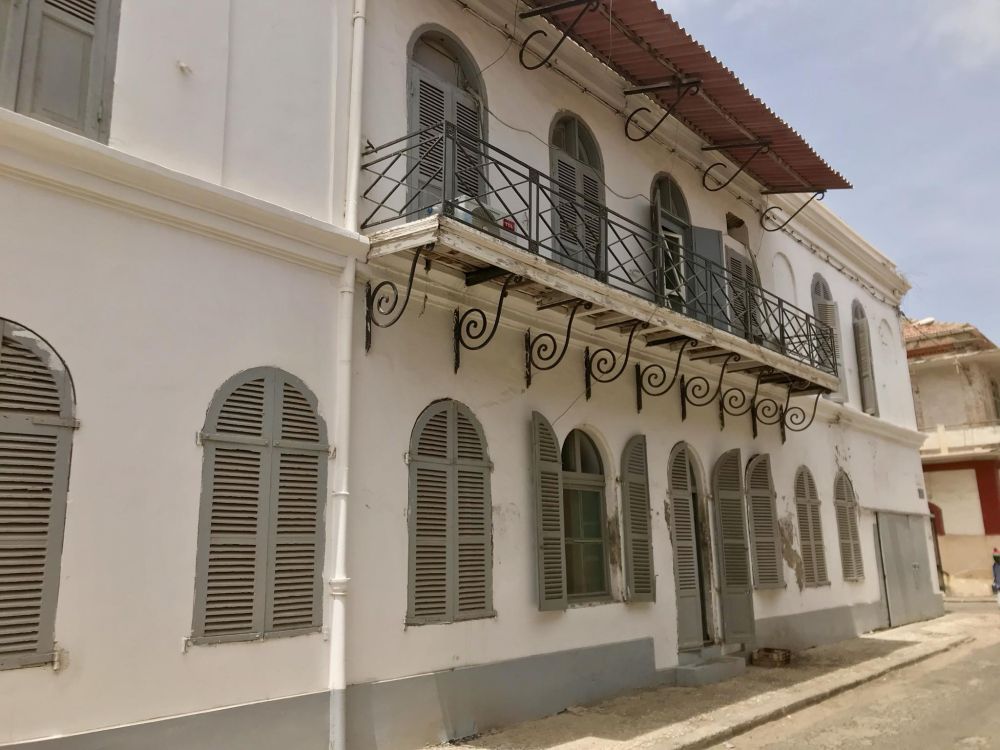
Furthermore, as one of the first French settlements in Africa and the former capital of French West Africa, there’s a unique mix of African traditions and European influence shaped into the city.
Saint-Louis has one main area protected by UNESCO, including N’Dar (Saint Louis Island), the banks and quays. It also includes the Faidherbe Bridge – a magnificent structure dating to 1897 designed by none other than Gustave Eiffel, the same engineer behind the Eiffel Tower in Paris!
What can you expect on a visit to the Island of Saint Louis?
Saint‑Louis feels like stepping back in time. Expect a mix of charm and decay.
As a UNESCO World Heritage Site, the island’s layout, old houses, and colonial buildings are still largely intact. Many of the grand buildings of the old city have been preserved and partly restored, giving you a glimpse of its former glory. They show how the city grew during the 17th–20th centuries and how important it once was in trade and administration.
The streets are lined with colourful, crumbling colonial buildings and old balconies that look like they might collapse if stepped on. Some buildings are beautifully restored, while others are falling apart, which only adds to the atmosphere. The Faidherbe Bridge is a highlight – walk across it for stunning views over the Senegal River.
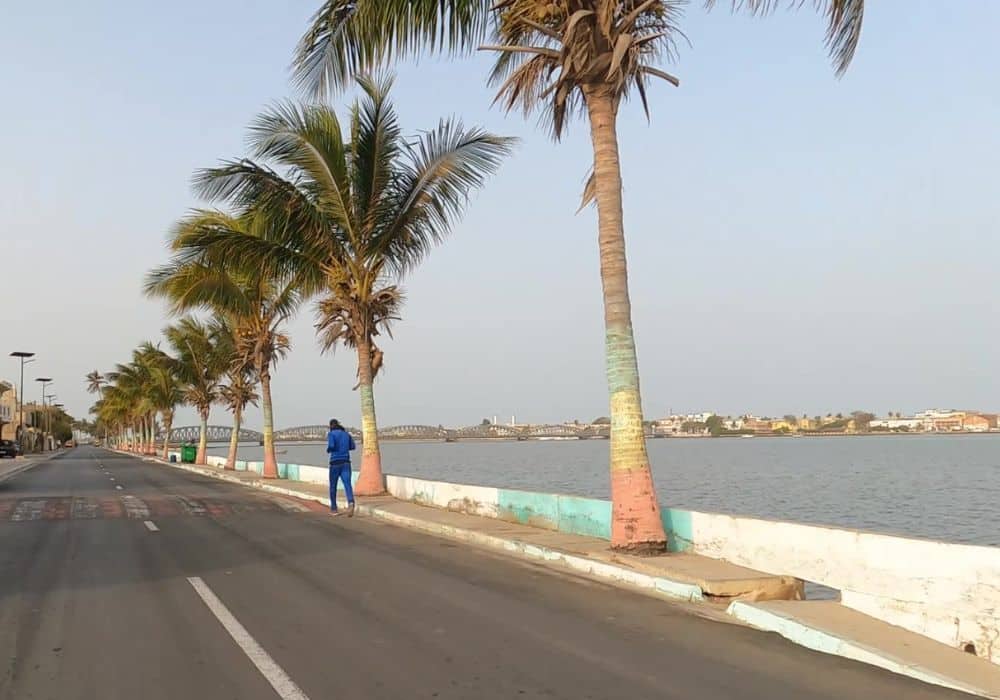
The island has a chilled vibe, with horse‑drawn carts passing by and kids running around the dusty roads. It’s laid‑back, but there’s an energy about the place that makes it lively. It’s filled with vigour despite its challenging years.
The city is typically hot and humid, with plenty of sunshine most of the year. The rainy season though (July–October) can bring heavy showers and steamy afternoons.
Apart from the architecture, the city also has small cafés, art shops, beaches and lively markets. Don’t be surprised if locals stop for a chat; people here are friendly. It’s the kind of place where you slow down, explore on foot, and soak up the history.
Accommodation ranges from guesthouses to hotels, generally comfortable and clean, though many are a little worn down. Most hosts are happy to share tips and recommend places to visit which will allow you to make the most of your trip.
The map below is centered on the bridge. It shows accommodations both on the island and in the rest of the city of Saint-Louis:
Is the Island of Saint Louis worth visiting?
The UNESCO World Heritage Island of Saint‑Louis in Senegal is a must‑visit for its striking architecture and deep colonial history.
The city is small and easy to explore in a couple of days. It also makes a fantastic base for trips into the northern regions of Senegal.
From Saint‑Louis Island, you can visit the Langue de Barbarie, a narrow sandy peninsula that attracts migratory birds such as pelicans and flamingos. You can also head to the UNESCO‑listed Djoudj National Bird Sanctuary, another haven for bird life. Both can be organised as simple day trips from Saint‑Louis.
With all this in mind, many travellers choose to stay in Saint‑Louis for longer than just a quick stop. It’s also a great spot for beach escapes, with a few resorts nearby, perfect for a relaxed beachside holiday.
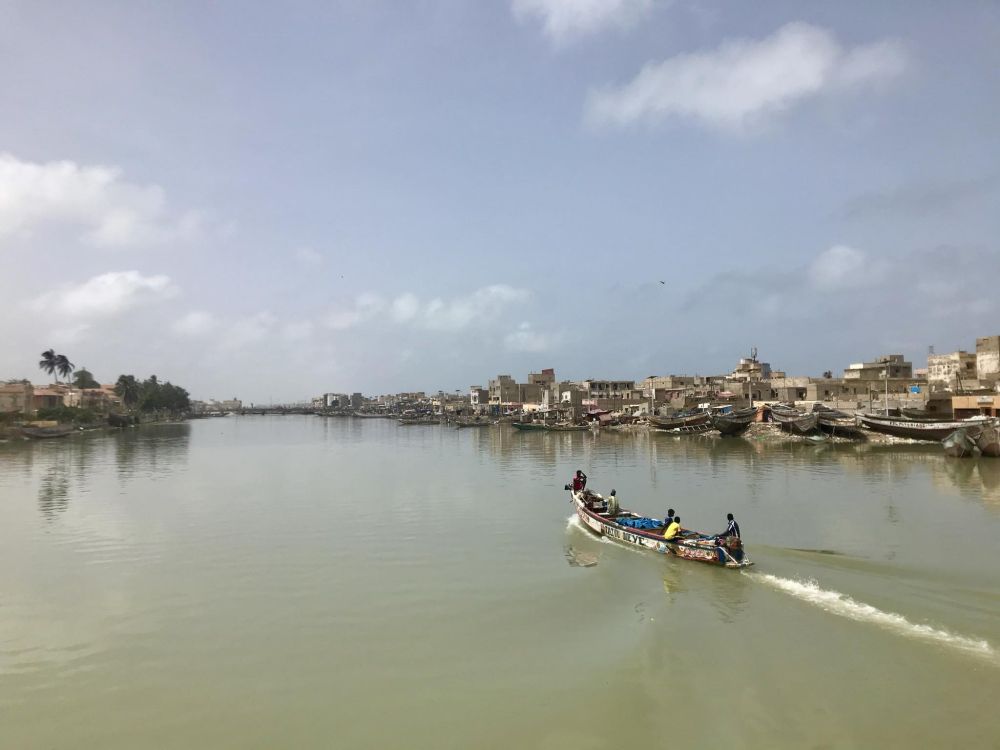
What sorts of travellers would like Saint Louis?
For those who don’t know much about French colonisation in West Africa or the Atlantic Slave Trade, Saint‑Louis can be a real eye‑opener. With so much history to take in, it’s perfect for travellers who appreciate foreign cultures, charming architecture, and places with a strong sense of character and story.
In a way, the city could be compared to Havana, Cuba. Both have colourful colonial buildings, a faded grandeur, and an energy that mixes old and new. Walking the streets, you get that same feeling of stepping back in time while seeing daily life unfold around you.
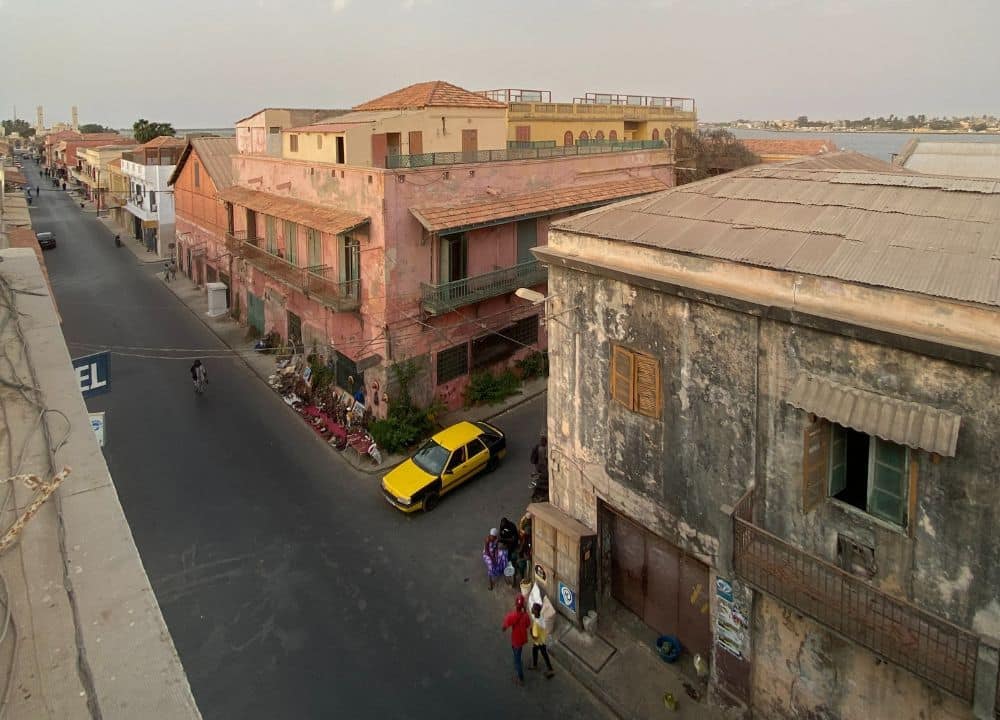
Tips for visiting Saint Louis, Senegal
Senegal is still an off‑the‑beaten‑path destination, so the tourist infrastructure is basic and still developing. Getting around Saint‑Louis itself is easy – walking is the best way to explore – but reaching nearby attractions can be tricky if you rely on public transport.
Expect delays and give yourself plenty of time to get places. Patience is key to enjoying your trip.
Although Saint‑Louis has a small airport, most international flights arrive in Dakar. The most common way to travel to Saint‑Louis is by road. Sept‑places (shared taxis) are the usual choice, but hiring a private taxi provides a more comfortable journey.
If you’re pressed for time, take this two-day tour from Dakar. It includes both Saint-Louis Island and the Djoudj National Bird Sanctuary.
While you’re in Dakar, make sure to visit the Island of Gorée to learn about Senegal’s slave-trading history.
Tap water isn’t safe to drink. Take a reusable bottle and fill up before heading out.
Senegal is a Muslim‑majority country. Dress modestly to avoid unwanted attention, and always greet people. A simple hello goes a long way.
Visitors from the UK, USA, Canada, EU countries and most West African nations can enter without a visa (will be given upon arrival) for up to 90 days, but check ahead of time to make sure this policy hasn’t changed.
Cash is king. Most places don’t take cards, apart from some hotels and larger businesses. Senegal uses the West African CFA franc (XOF), but some businesses will accept US dollars and euros, which are easy to exchange. ATMs can be unreliable. Consider using mobile money apps like Wave or Orange Money for everyday payments if obtaining cash is a problem.
Where is Saint-Louis?
Saint‑Louis is in the far north of Senegal, right at the mouth of the Senegal River near the border with Mauritania. It sits on a narrow island connected to the mainland by the famous Faidherbe Bridge. The nearest major city is Dakar, about 320 km (200 miles) south.
From Dakar, you can take a sept‑place (shared taxi) to Saint‑Louis. The journey takes around 5 hours. They leave once full from major transport hubs in Dakar. It’s a budget‑friendly option, but expect basic comfort and limited luggage space.
If you prefer to get around entirely on your own, think about picking up a rental car in Dakar. The drive takes around 4.5 to 5 hours depending on traffic. There is free street parking on the island although some hotels and businesses provide designated parking spaces. Never leave valuables inside a vehicle.
For more information about the Island of Saint Louis, its opening hours and admission fees, see its official website.
Have you been to Saint-Louis Island? If so, do you have any additional information or advice about this UNESCO World Heritage site? Please add your comments below!

